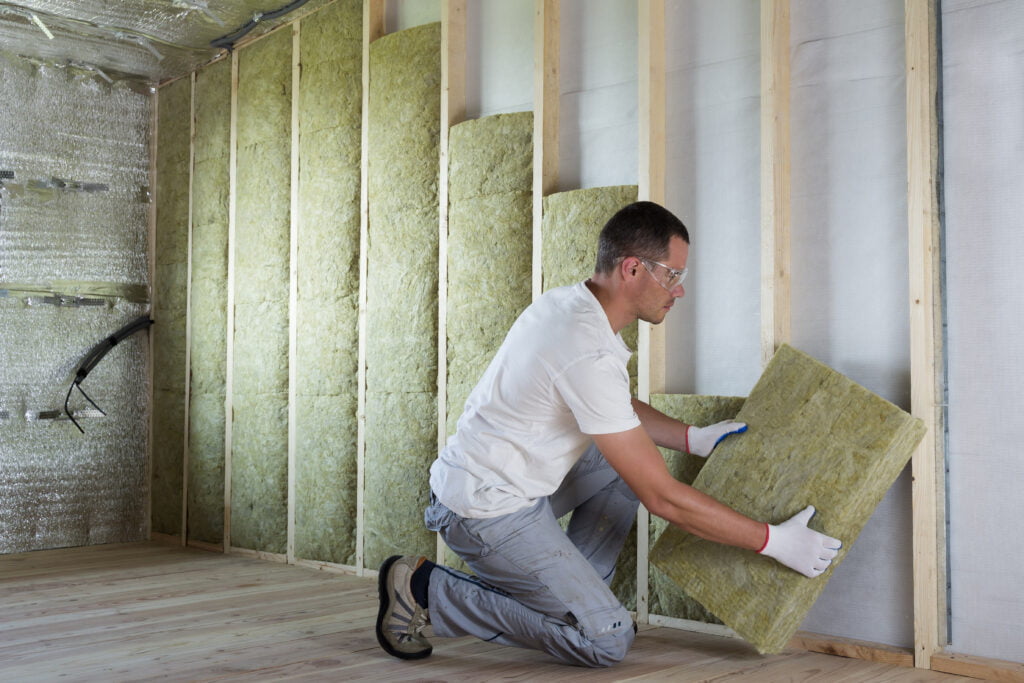Keeping Cool: A Guide to Lowering Energy Costs with Insulation
In this article, we will explore the ways that insulation can help you keep your home cool in the summer and also lower your energy costs. By understanding the basics of interior and exterior insulation, you’ll be able to determine which type of insulation best suits your needs and budget. We will discuss how each type works and its benefits, as well as any potential drawbacks. From there, we will look at some tips for proper installation and maintenance of insulation for maximum efficiency. Finally, we will cover some common questions about insulation. This will enable you to make an informed decision on what type is right for you.

What is Insulation & Does It Affect Energy Costs?
Insulation is a material used to reduce heat flow between two objects or regions. It works by slowing down the transfer of heat or cold. This is done by trapping air inside the insulation material, which prevents it from circulating between the two objects. Insulation comes in many forms, with most used for buildings to help increase their energy efficiency and lower energy costs.
Types of Home Insulation to Reduce Energy Costs
Home Insulation is usually used for homes with a single layer of insulation, which is designed to reduce the amount of heat transfer in and out of the home. This can be done with either interior or exterior insulation. Interior insulation is usually used to keep warm air out during summer months and cold air out during winter months. Exterior insulation helps slow down the flow of outside temperatures throughout the entire year.
#1: Spray Foam Insulation
This type of home insulation is usually used in attics and walls. It is applied as a liquid that then expands and hardens into an air-seal barrier. This helps with blocking air leaks in the home. Spray foam insulation is highly effective at reducing energy costs but can be expensive to install.
#2: Fiberglass Insulation
This type of home insulation is usually used on walls or floors, and it comes in pre-cut batts or rolls. The fiberglass material traps heated or cooled air inside the home to help regulate temperatures throughout the year. It’s relatively inexpensive to install and very effective at reducing energy costs over time.
#3: Reflective Insulation
Reflective insulation serves to reflect radiant heat away from a home by using a reflective substance, typically aluminum foil. It is typically utilized in walls and attics to keep homes cool in the summer. Although reflective insulation is a cost-effective alternative for lowering energy expenses, it sometimes performs less well than other types of insulation.
#4: Cellulose Insulation
Cellulose insulation is made up of recycled materials, such as paper and cardboard. It’s usually used in attics and walls to help create an air-seal barrier that traps heated or cooled air inside the home. Cellulose insulation is a cost-effective option for reducing energy costs. However, it may not be as effective as other types of insulation.
#5: Rigid Foam Board Insulation
This type of home insulation is usually used on walls and floors. It’s made up of pre-cut panels of foam board that are installed over existing walls or ceilings to help block air leaks in the home. Rigid foam board insulation is highly effective at reducing energy costs but can be expensive to install.
The Insulation Installation Process
Most home insulation requires professional installation to ensure that it is properly installed and sealed. Therefore, it’s important to hire a qualified contractor who can inspect the home and determine which type of insulation would be best suited for your needs. Additionally, they will be able to advise you on any other energy-saving measures that may need to be taken in order to maximize the efficiency of your insulation.
Maintenance, Upkeep, & Energy Costs
Once you have the right kind of insulation installed in your home, you’ll want to make sure that it stays in good condition so that it continues to provide optimal energy performance. To help maintain your insulation, you should periodically check for signs of damage or wear, such as cracks or loose seams. If there are any issues found, contact your contractor as soon as possible to have them addressed. Additionally, you should clean and dust the insulation at least once a year to help improve its performance.
By following these instructions, you can help ensure that your home is properly insulated and energy-efficient for years to come. Keeping cool with the insulation not only saves you money on energy costs but also helps protect the environment by reducing your carbon footprint. With proper installation, maintenance, and upkeep, you can reduce your energy costs while keeping your home comfortable all year round. Enjoy a comfortable home with iFoam. Contact them today for a consultation! They will surely provide you with the best service for your insulation needs.
Infographic Provided By solar panel installation Columbia MD Company, Sunburst Solar
Final Thoughts Lowering Energy Costs
In conclusion, understanding the benefits of insulation and taking the necessary steps to lower energy costs can have a significant impact on both the environment and your wallet. By properly insulating your home, you can reduce heat loss in the winter and keep it cool in the summer, ultimately leading to lower energy bills. Whether it’s adding insulation to your attic, walls, or basement, or sealing air leaks with weather stripping and caulking, there are many effective ways to improve energy efficiency. Don’t underestimate the power of insulation – it’s a simple and cost-effective solution that can make a big difference. So, take action today and start reaping the rewards of a more energy-efficient home!







One Comment
Pingback: